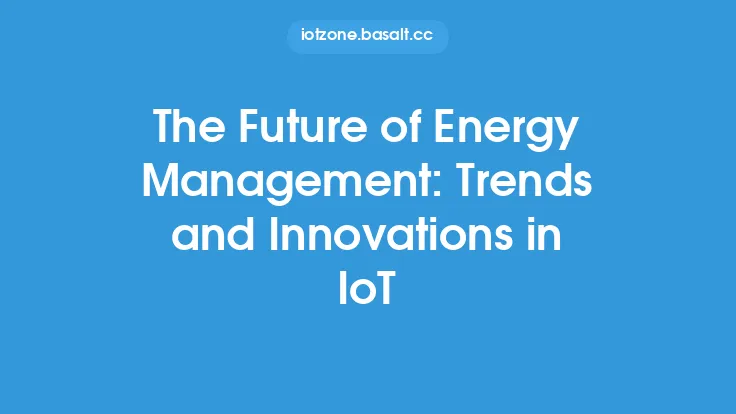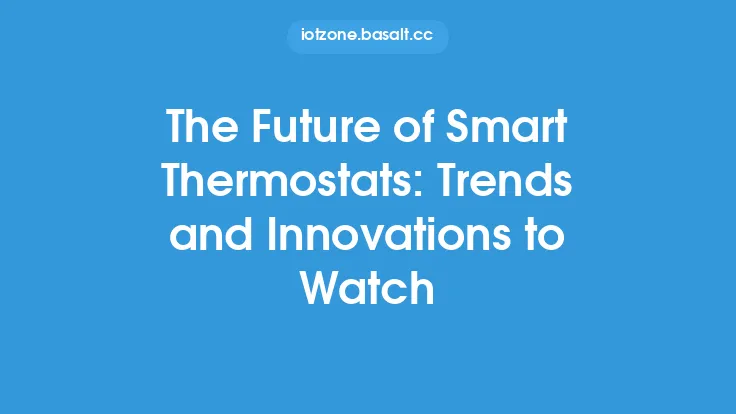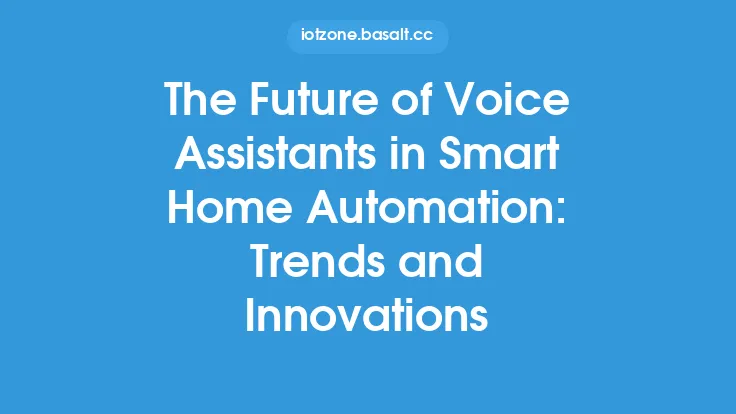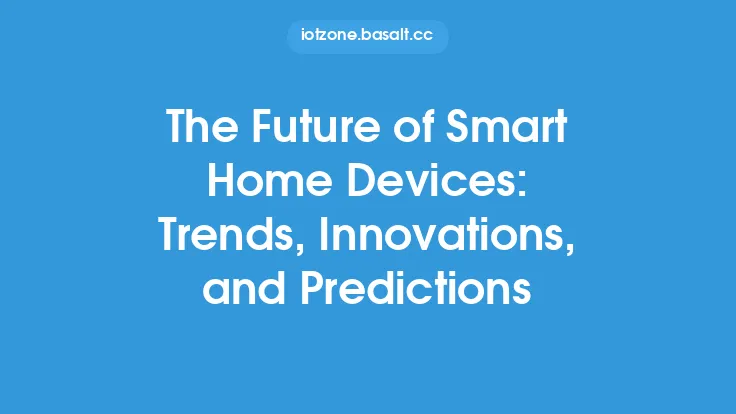The concept of smart homes has been around for several decades, but it's only in recent years that the technology has advanced to the point where it's becoming a mainstream reality. One of the key aspects of smart home automation is energy management, which involves the use of advanced technologies to monitor, control, and optimize energy consumption in residential buildings. As the world becomes increasingly focused on reducing energy consumption and mitigating the effects of climate change, the future of energy management in smart homes is looking brighter than ever.
Introduction to Smart Home Energy Management
Smart home energy management involves the use of a variety of technologies, including sensors, actuators, and control systems, to monitor and control energy consumption in real-time. This can include everything from smart thermostats and lighting systems to advanced home energy management systems (HEMS) that can monitor and control energy usage throughout the entire home. The goal of smart home energy management is to provide homeowners with a detailed understanding of their energy usage patterns, as well as the tools and insights they need to make informed decisions about how to reduce their energy consumption.
Trends in Smart Home Energy Management
There are several trends that are currently shaping the future of smart home energy management. One of the most significant is the increasing use of artificial intelligence (AI) and machine learning (ML) algorithms to analyze energy usage patterns and provide personalized recommendations for reducing energy consumption. Another trend is the growing adoption of voice-controlled smart home devices, such as Amazon Alexa and Google Home, which are making it easier for homeowners to control their energy usage with simple voice commands. Additionally, there is a growing focus on the use of renewable energy sources, such as solar and wind power, to reduce dependence on fossil fuels and lower energy bills.
Innovations in Smart Home Energy Management
There are several innovations that are currently driving the evolution of smart home energy management. One of the most significant is the development of advanced HEMS that can monitor and control energy usage in real-time. These systems use a variety of sensors and actuators to collect data on energy usage patterns, and then use this data to provide personalized recommendations for reducing energy consumption. Another innovation is the use of smart grid technologies, such as smart meters and grid management systems, to provide homeowners with real-time information about their energy usage and the status of the grid. Additionally, there is a growing focus on the use of energy storage systems, such as batteries, to store excess energy generated by renewable sources and reduce dependence on the grid.
Technical Aspects of Smart Home Energy Management
From a technical perspective, smart home energy management involves the use of a variety of protocols and standards to enable communication between different devices and systems. One of the most common protocols used in smart home energy management is Zigbee, which is a low-power, low-data-rate wireless communication standard that is well-suited for use in home automation applications. Another protocol that is commonly used is Z-Wave, which is a wireless communication standard that is designed specifically for use in home automation applications. In terms of standards, one of the most significant is the Smart Energy Profile (SEP) standard, which provides a framework for interoperability between different smart energy devices and systems.
Benefits of Smart Home Energy Management
The benefits of smart home energy management are numerous. One of the most significant is the potential for energy savings, which can be achieved through the use of advanced technologies to monitor and control energy consumption in real-time. Another benefit is the increased convenience and comfort that smart home energy management systems can provide, such as the ability to control lighting and temperature settings remotely. Additionally, smart home energy management systems can provide homeowners with a detailed understanding of their energy usage patterns, which can help them make informed decisions about how to reduce their energy consumption and lower their energy bills.
Challenges and Limitations of Smart Home Energy Management
Despite the many benefits of smart home energy management, there are also several challenges and limitations that must be addressed. One of the most significant is the issue of interoperability, which refers to the ability of different devices and systems to communicate with each other seamlessly. Another challenge is the issue of security, which is a major concern in any home automation application. Additionally, there is a growing need for standardization in the smart home energy management industry, which can help to ensure that different devices and systems are compatible with each other and can communicate seamlessly.
Future Directions for Smart Home Energy Management
The future of smart home energy management is looking bright, with several trends and innovations that are currently shaping the industry. One of the most significant is the growing adoption of AI and ML algorithms to analyze energy usage patterns and provide personalized recommendations for reducing energy consumption. Another trend is the increasing use of voice-controlled smart home devices, which are making it easier for homeowners to control their energy usage with simple voice commands. Additionally, there is a growing focus on the use of renewable energy sources and energy storage systems to reduce dependence on fossil fuels and lower energy bills. As the smart home energy management industry continues to evolve, we can expect to see even more innovative solutions and technologies that can help homeowners reduce their energy consumption and lower their energy bills.





